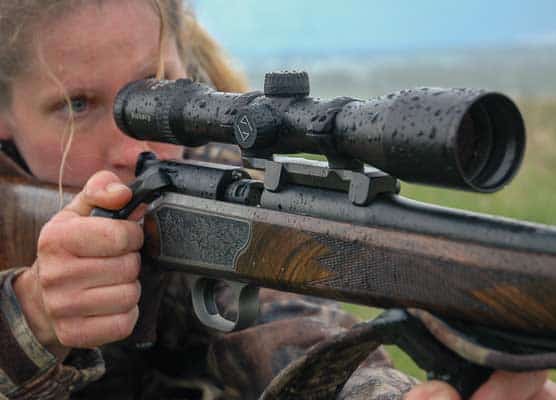Magnification
Magnification helps you spot or identify distant objects and sift details in thickets to find hiding game. It enables you to aim precisely, quartering a bullseye. You can nudge the crosswire incrementally to allow for bullet drop or into the wind to counter drift. But like fast cars and supermodels, magnification is not all virtue. It reduces the size of the field you see, as it appears to draw you nearer to what’s in it. As FOV shrinks, you see less and less around its center. Some of what you miss can be important.
Secondly, magnification requires that you temporarily re-wire connections between eye and brain. When a feature small to the naked eye becomes suddenly bigger, you must place it into context. Until you do that, the feature is something else. Look at a speck under a microscope, and you no longer see a speck, but a coffee ground, a small insect or a grain of volcanic ash.
Partly for this reason, I prefer a binocular with modest magnification — 7x or 8x. A 3x or 4x rifle scope has all the power I want for hunting game bigger than coyotes. Low magnification requires less of my brain as little objects become big and new detail appears in the FOV. While high-power lenses reveal more detail, they delay interpretation. Peering at a hair under a microscope, you’ll wonder briefly how that timber could fit on a slide.
Magnification also gobbles incidental light. Reflection and refraction from and within a lens snare some of that light, as much as 4% on each uncoated surface in a series of lenses inside an optic. Coating lenses with magnesium fluoride, a process credited to Zeiss during the 1930s, reduces that loss. Modern multi-coatings pare it further.
Viewing and aiming can become more difficult as you add magnification. It makes a binocular field jump about and the reticle in your rifle scope hard to control. Magnification doesn’t introduce those gyrations; it just makes them more visible. With a 20x scope in rimfire competition, standing offhand with no support gave me fits. Despite the mitigating influence of a shooting jacket and a heavy rifle, the crosswire was never still. Tiring muscles imparted more violence to the sight picture. Finally, in despair, I’d horse the trigger as the reticle swept by the 10-ring. Uncontrolled weeping ensued.
In a 4x scope, the target image is smaller; but the speed and amplitude of reticle movement are much reduced. You squeeze the trigger blissfully unaware of all but your rifle’s most violent tremors. A better shot results.
The best balance of eye relief, field of view and magnification depends on an optic’s purpose, and on how you use that glass. Bear in mind manufacturers can’t divine what will best serve you. Spreadsheets show only what’s most profitable.
Subscribe To GUNS Magazine
Read the full article here

